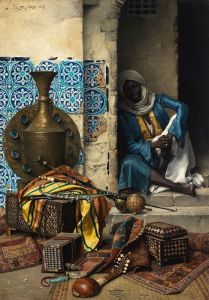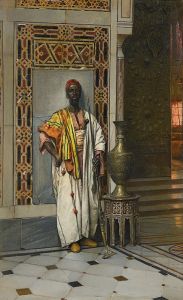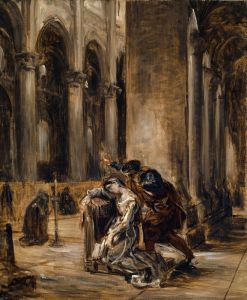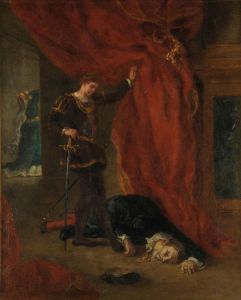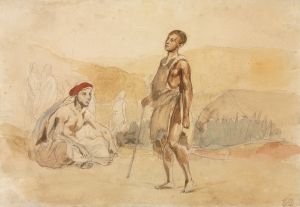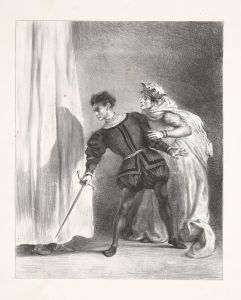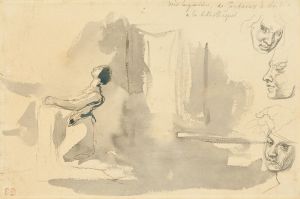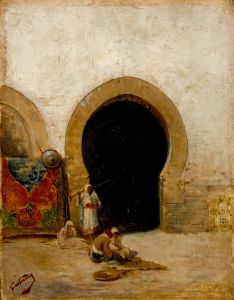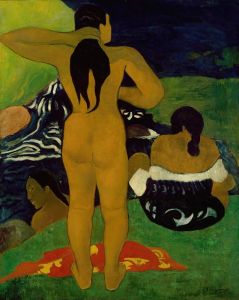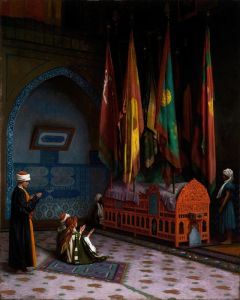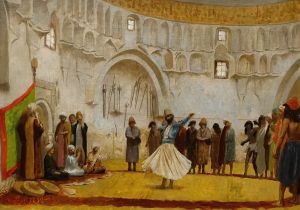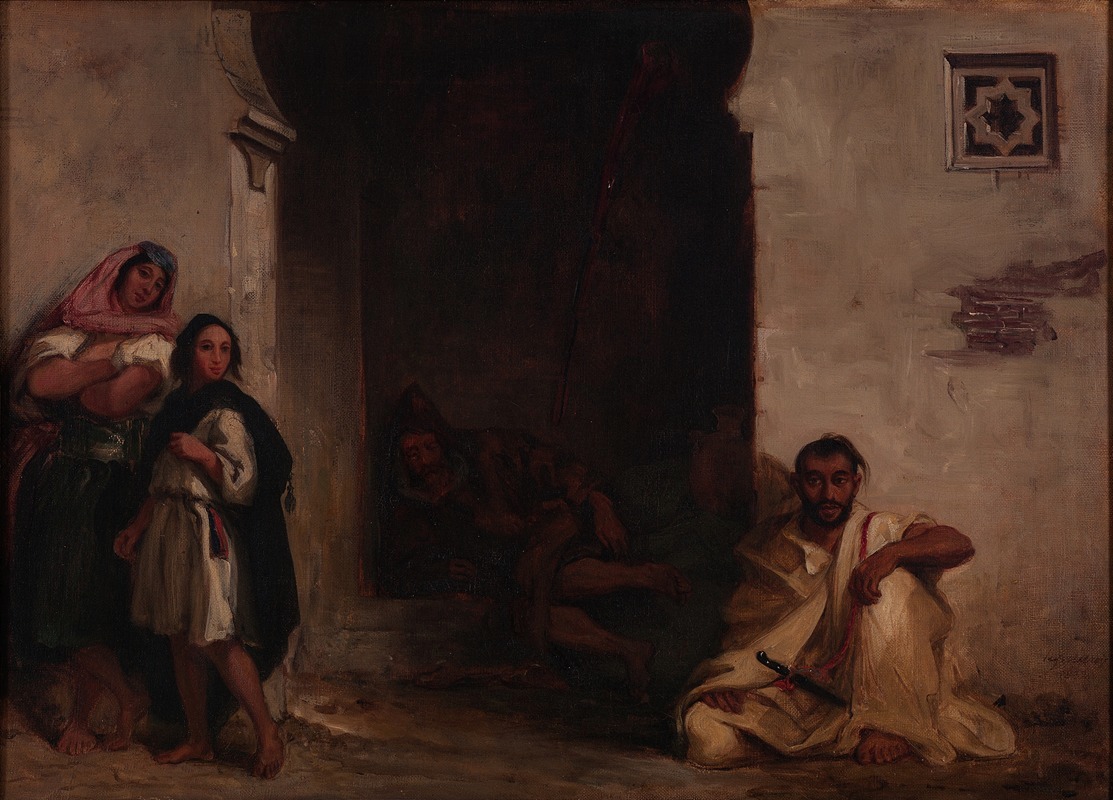
Street in Meknes
A hand-painted replica of Eugène Delacroix’s masterpiece Street in Meknes, meticulously crafted by professional artists to capture the true essence of the original. Each piece is created with museum-quality canvas and rare mineral pigments, carefully painted by experienced artists with delicate brushstrokes and rich, layered colors to perfectly recreate the texture of the original artwork. Unlike machine-printed reproductions, this hand-painted version brings the painting to life, infused with the artist’s emotions and skill in every stroke. Whether for personal collection or home decoration, it instantly elevates the artistic atmosphere of any space.
"Street in Meknes" is a painting by the renowned French artist Eugène Delacroix, who is often regarded as a leading figure of the Romantic movement in art. Delacroix was known for his expressive brushstrokes and his fascination with exotic subjects, which he often encountered during his travels. This particular painting is a testament to his interest in North African culture and landscape, which he explored during his visit to Morocco in 1832.
Eugène Delacroix's journey to Morocco was part of a diplomatic mission, and it had a profound impact on his artistic vision. The vibrant colors, dynamic compositions, and the rich cultural tapestry of Morocco left a lasting impression on him. "Street in Meknes" is one of the works that emerged from this period, capturing the essence of Moroccan life and architecture.
The painting depicts a street scene in the city of Meknes, which is one of the four imperial cities of Morocco. Meknes is known for its historical significance and its blend of Islamic and European architectural styles. Delacroix's portrayal of the street scene is characterized by his use of vivid colors and attention to detail, which bring the bustling atmosphere of the city to life. The painting reflects Delacroix's ability to convey the energy and vibrancy of everyday life in a foreign land.
In "Street in Meknes," Delacroix employs a palette that includes warm earth tones and bright accents, capturing the play of light and shadow typical of the region. His brushwork is both fluid and precise, allowing him to depict the textures of the buildings and the movement of the figures within the scene. The composition is carefully arranged to guide the viewer's eye through the street, inviting them to explore the depth and richness of the environment.
Delacroix's interest in Orientalism, a term used to describe the depiction of Eastern cultures by Western artists, is evident in this work. However, unlike some of his contemporaries, Delacroix's approach was more nuanced and respectful, as he sought to portray the authenticity of the scenes he witnessed. His Moroccan paintings, including "Street in Meknes," are celebrated for their ethnographic accuracy and their ability to capture the spirit of the places he visited.
The influence of Delacroix's Moroccan experience extended beyond his own work, inspiring future generations of artists. His use of color and expressive techniques can be seen in the works of later Impressionists and Post-Impressionists, who admired his ability to convey emotion and atmosphere through his art.
"Street in Meknes" remains an important piece within Delacroix's oeuvre, illustrating his mastery of color, composition, and his deep appreciation for the cultures he encountered. The painting is a valuable historical document, offering insight into the 19th-century Western perspective on North Africa and contributing to the broader understanding of cultural exchange through art.





